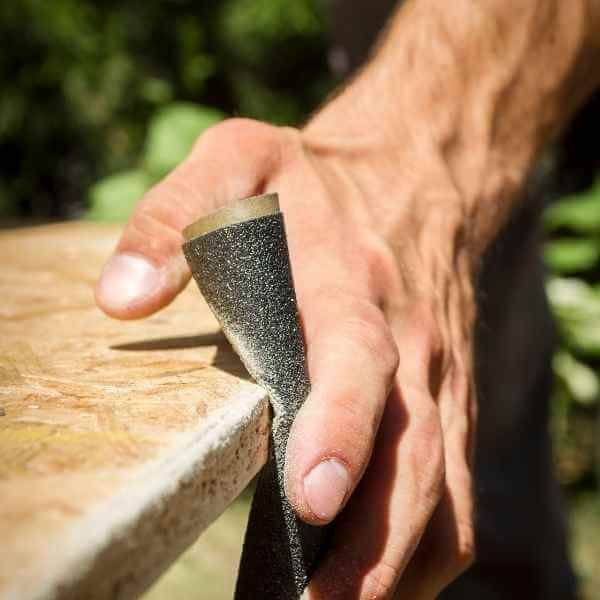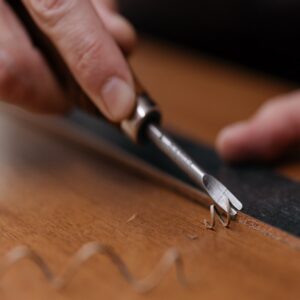After sanding the wood, the next step is to clean it properly. This is an important step, as you want to remove all of the dust and debris from the surface of the wood. If you don’t clean it properly, the wood can become stained or damaged. In this blog post, we will discuss two different ways to clean wood after sanding. We will discuss the pros and cons of each method.
Sanding The Wood
Sanding the wood is the first step in the process of refinishing it. The goal of sanding is to create a smooth surface on the wood. After sanding, you will need to clean the wood properly. This is an important step, as you want to remove all of the dust and debris from the surface of the wood. If you don’t clean it properly, the wood can become stained or damaged.
How Cleaning The Wood After Sanding Helps?
If your target is to stain the wood, cleaning it after sanding is very important. Stains will not adhere properly to a dirty surface. In addition, if you are planning on painting the wood, a clean surface is essential for a good paint job.
Vacuum Cleaner
Once you’re finished sanding, it’s important to remove all of the dust from the wood so that it doesn’t interfere with the paint job. The best way to do this is to vacuum up the dust with a handheld vacuum or use a damp cloth to wipe it away.
If you’re using a vacuum, make sure that the vacuum attachment is clean and free of any debris so that it doesn’t scratch the wood. Once you’ve removed all of the dust, you can proceed with painting or staining the wood as desired. Be sure to vacuum in the direction of the grain.
Wet Rag
Another option for cleaning wood after sanding is to use a wet rag. This method is best for removing large chunks of dust and debris. Start by dampening a clean rag with water. Then, wipe down the entire surface of the wood. Be sure to wring out the rag as it gets too wet. You don’t want to damage the wood with water.
A Dust Brush
If you’re looking for an easy and effective way to clean wood after sanding, then a dust brush is the perfect tool for the job. You can use a simple dust brush to quickly and easily remove the dust from your woodworking project.
Mineral Spirits
Before using mineral spirits, be sure to clean the dust with a brush first. Then, apply the mineral spirits to a clean cloth and wipe down the wood. This will help to remove any remaining dust and give your project a nice, clean finish.
Wiping Down with a Damp Cloth
Another effective way to clean wood after sanding is to wipe it down with a damp cloth. You may also clean up any dust or debris with a vacuum. This will assist you in eliminating any remaining particles and providing your project with a nice, clean finish.
Tack Cloth
A tack cloth is a special type of cloth that is designed to remove dust from surfaces. To use a tack cloth, simply wipe it down the surface of your woodworking project. Use a clean cloth to finish up any residual dust from the previous steps. This will assist you in removing any remaining dust and providing your project with a nice, clean finish.
Can You Use Isopropyl Alcohol To Clean Wood After Sanding?
Yes, you can use isopropyl alcohol to clean wood after sanding. Simply apply the alcohol to a clean cloth and wipe down the wood. This will aid in the removal of any dust and give your project a nice, clean finish.
Can You Use Vinegar On Wood?
Yes, you can use vinegar on wood. Vinegar is a natural cleaner that can be used to clean many different surfaces. The easiest method to clean your surface is to apply it to a clean cloth and wipe down the wood. This will help remove any dust and provide your project with a fresh, clean finish.
What Is The Best Way To Clean Wood Before Painting?
The best way to clean wood before painting is to vacuum it with a handheld vacuum or use a damp cloth to wipe down the surface. You want to remove all of the dust and debris from the surface of the wood so that it doesn’t interfere with the paint job. Once you’ve removed all of the dust, you can proceed with painting the wood as desired. Be sure to vacuum in the direction of the grain.
How Long After Painting I Can Sand The Wood?
You should wait at least 24 hours after painting your wood before sanding it. This will give the paint time to dry and set so that you can get a nice, smooth finish when sanding. If you sand too soon, you risk damaging the paint job and ruining all of your hard work!
Do I Need To Sand The Wood Again After Painting?
No, you do not need to sand the wood again after painting it. Once the paint is dry, you can proceed with your project as usual. There is no need to sand the wood a second time.
What Type of Sandpaper Should I Use For Sanding The Wood?
There are a few different types of sandpaper that you can use on wood, but for most projects, you’ll want to use either fine-grit or medium-grit sandpaper. Fine-grit sandpaper will remove the paint more slowly and leave a smoother finish, while medium-grit sandpaper will work more quickly but may leave a slightly rougher finish.
Final Words
Cleaning wood after sanding doesn’t have to be a difficult task. By following these simple tips, you can easily remove the dust and debris from your project so that you can get a nice, clean finish. Be sure to vacuum or wipe down the wood with a damp cloth before painting or staining to ensure that your project turns out just the way you want it to!









